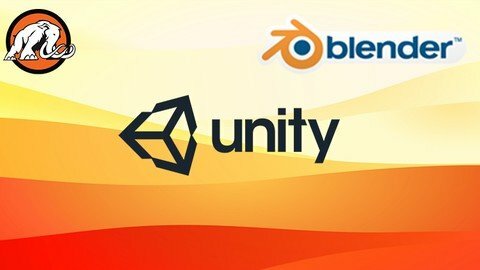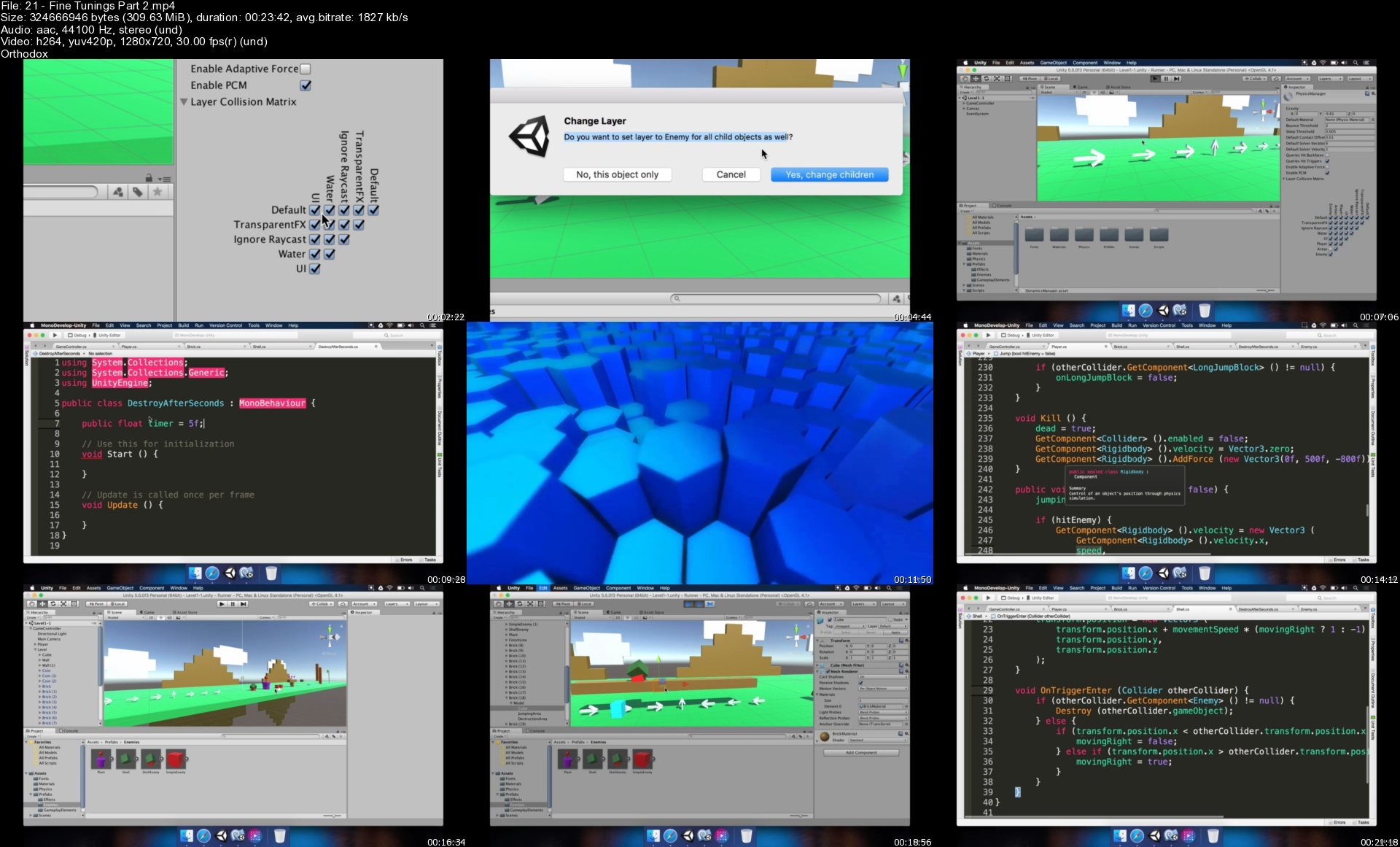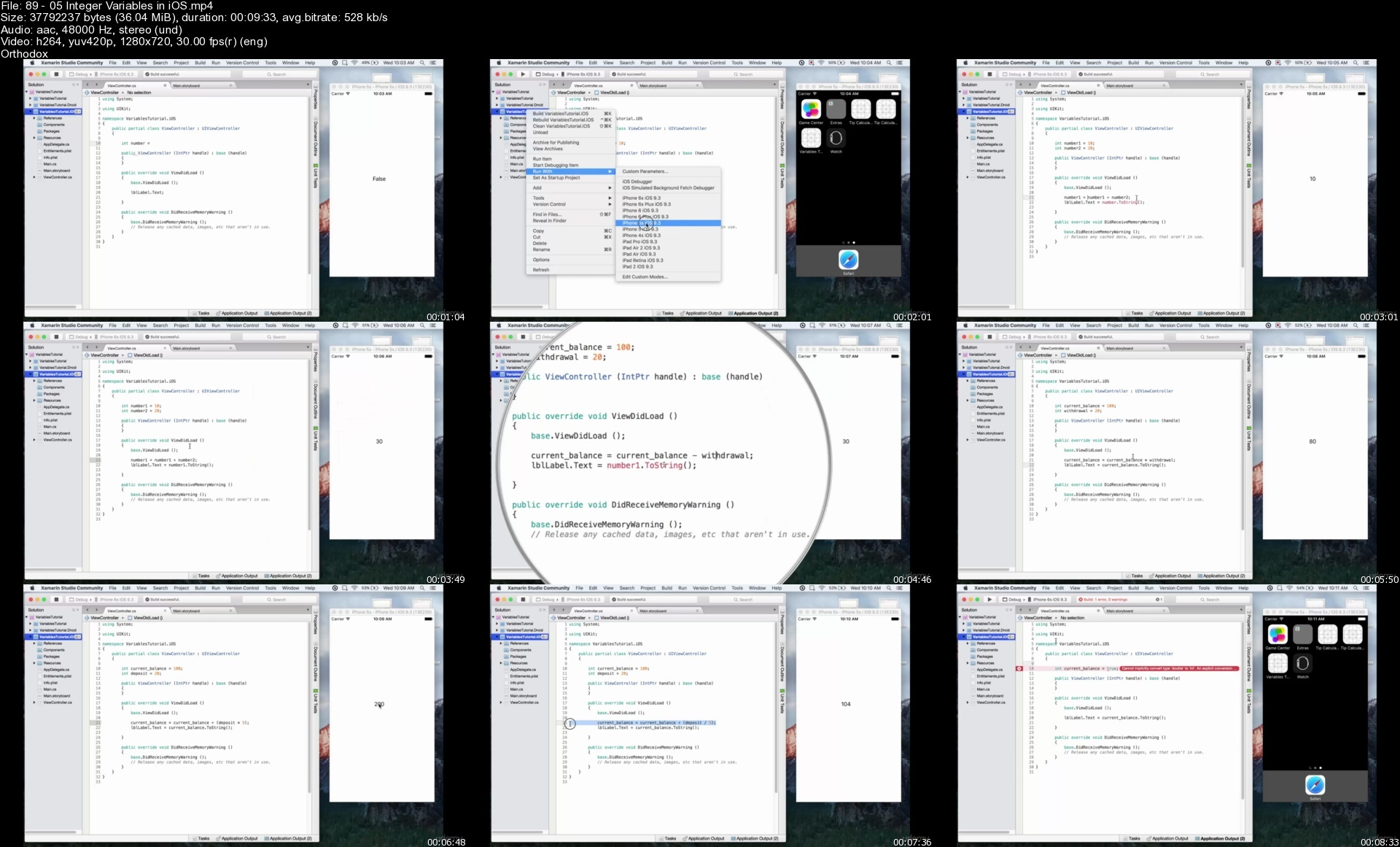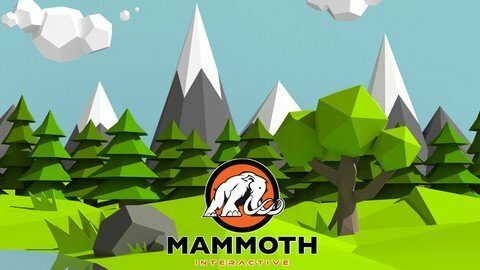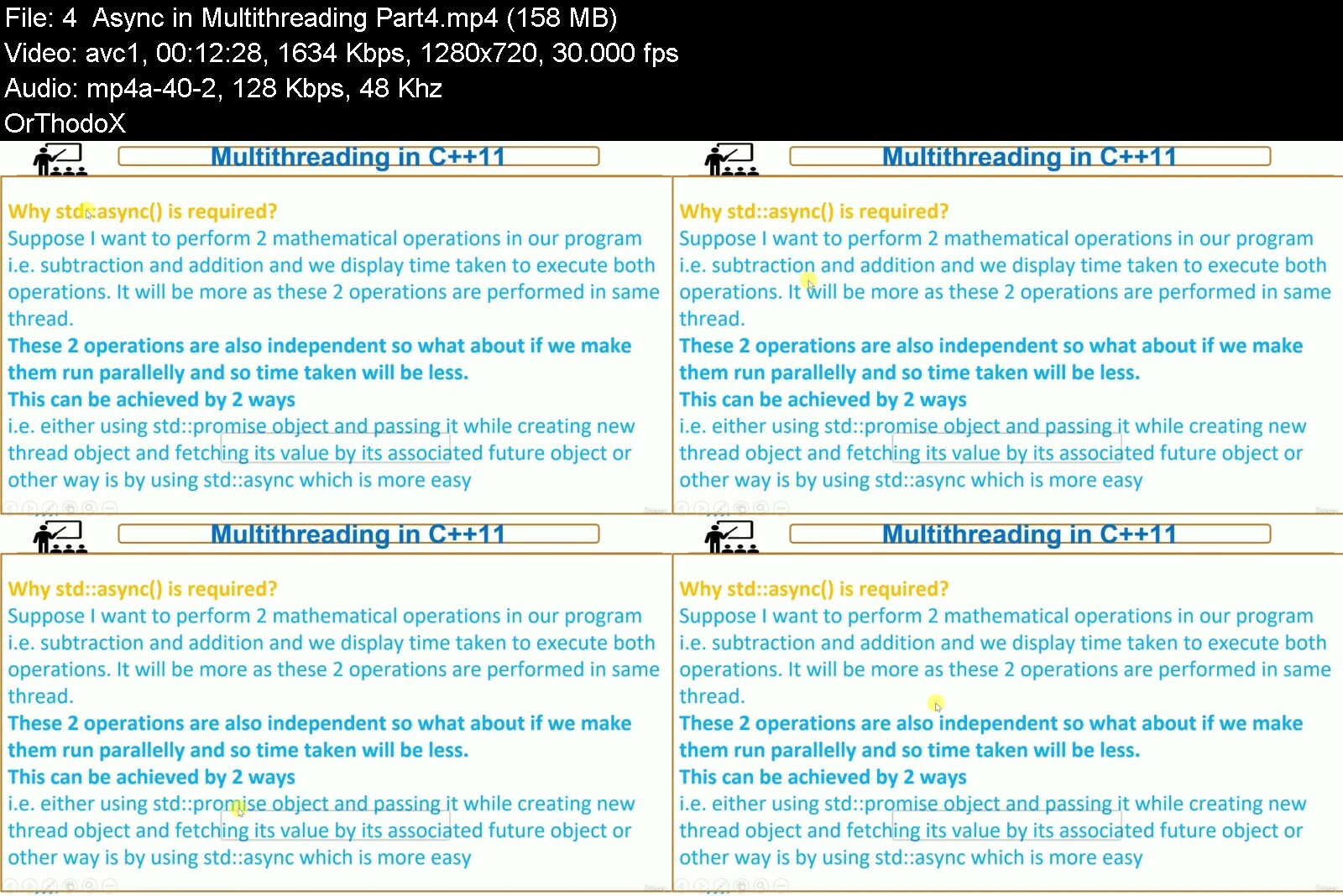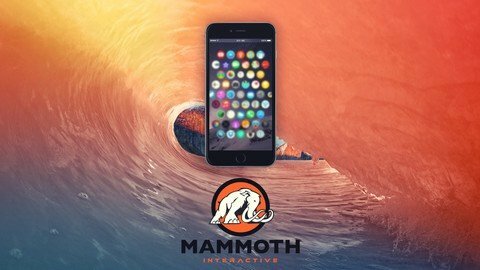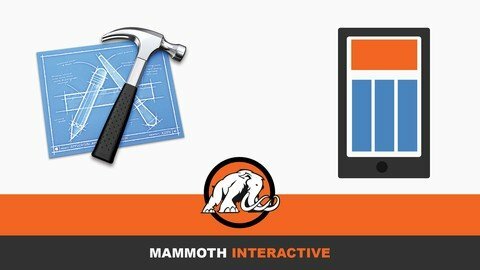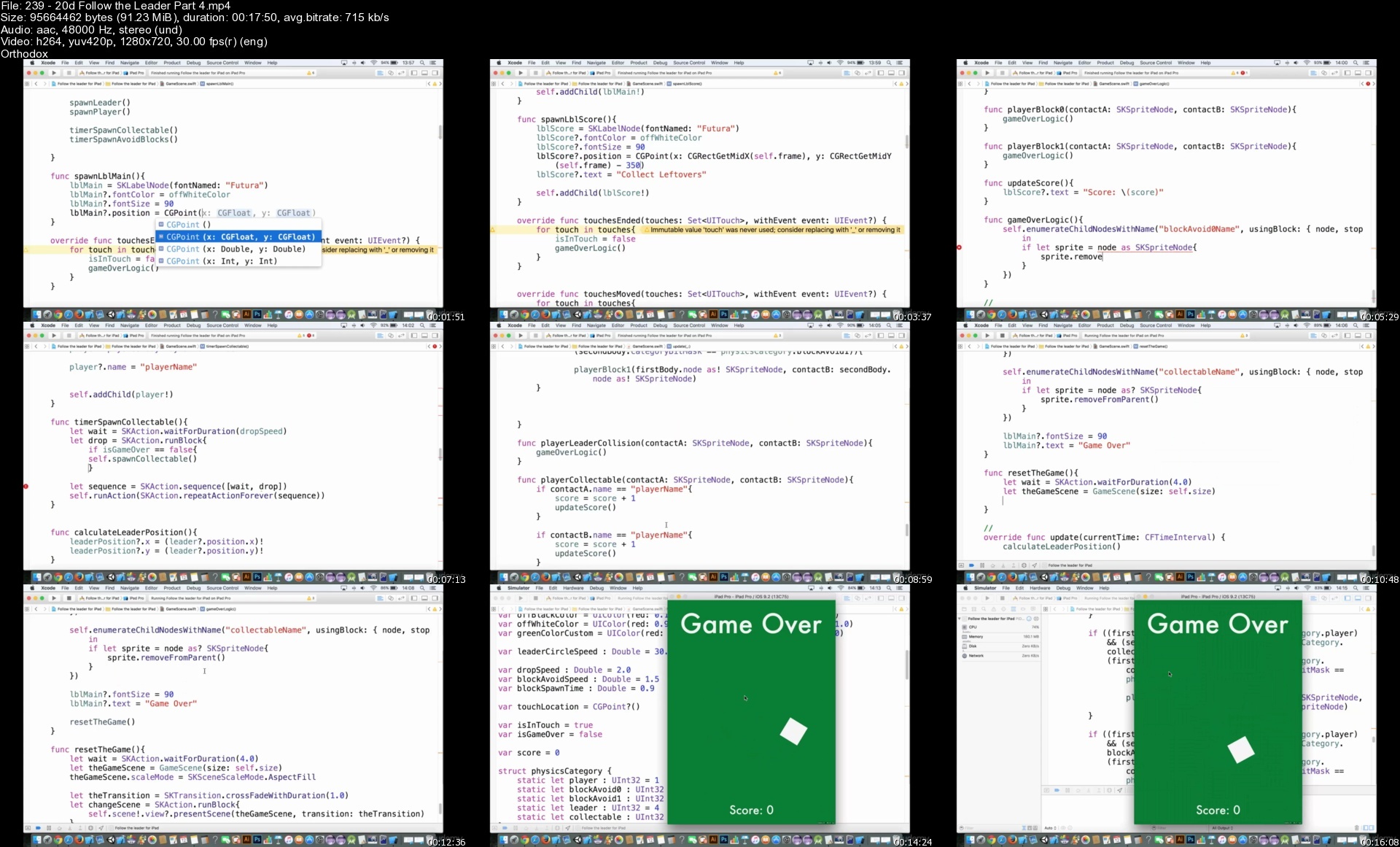Complete Prediction And Detection Model Building With Python

Complete Prediction And Detection Model Building With Python
Last updated 2/2019
MP4 | Video: h264, 1280x720 | Audio: AAC, 44.1 KHz
Language: English | Size: 12.36 GB | Duration: 18h 18m
Build data handling & manipulation projects with machine learning. Learn Java, Python & stock market prediction. & More!
What you'll learn
Learn how to code in Java, including all the fundamentals on superclasses, operations, and axis modifiers.
Build user interfaces for Android apps, including connecting all the features and implementing the backend
Code in Python is one of the Top 3 coding languages in demand this year.
Use Tensorflow, the #1 open source software library for dataflow programming.
Build hands-on projects and use source code to check your work and expand.
Meet the Mammoth Interactive community.
And more.
Requirements
All Levels Welcome
Description
Build 9 projects while learning to code and build machine learning models. Experience the power of cutting edge frameworks and learn to handle all types of data.With crystal-clear audio, HD screencasts, and over 120 lectures, this is a course you do not want to miss.You'll build Image Recognition apps that have powerful features. You'll learn topics that include
Stock Market PredictionRetrieving Data via RESTful API CallParsing JSON Data, Pycharm-StyleProcessing Text DataSetting up Vocab DictionaryWeather PredictionFirst: A Thorough Introduction For BeginnersLearn to download and install Android Studio and explore the interface. You'll get all source code and project files for the 9 hands-on projects in this course.You'll learn how to code in Java, including all the fundamentals on superclasses, operations, and axis modifiers. You'll learn how to build a user interface for an Android App, including connecting all the features and implementing the backend. Included in this course is material for beginners to get comfortable with the interfaces. Please note that we reuse this content in similar courses because it is introductory material. You can find some material in the course Hands-On Machine Learning: Learn TensorFlow, Python, & Java!Code In The Top Languages Of The YearYou'll learn how to code in Python, which we will show you through Pycharm. Python is one of the Top 3 coding languages in demand this year, alongside Java and Javascript. Python is used by companies big and small like YouTube, Instagram, and Google.Use The Top Software For ProgrammingYou will learn how to use Tensorflow, the #1 open source software library for dataflow programming. Tensorflow is a symbolic math library, and we will use it for machine learning applications.And MORE Data Handling And Manipulation ProjectsFormatting DatasetsBuilding Computational GraphExploring the CIFAR 10 DatasetLoading and Displaying ImagesLoading Face and Non Face ImagesEmotions Detection Project
Overview
Section 1: Introduction to Machine Learning + Software
Lecture 1 Projects Overview
Lecture 2 Prediction and Detection Project Resources - Mammoth Interactive
Section 2: Android Studio
Lecture 3 Downloading and Installing Android Studio
Lecture 4 Exploring Interface
Lecture 5 Setting up an Emulator and Running Project
Lecture 6 Code
Section 3: Introduction to the Java Programming Language
Lecture 7 Introduction to the Java Programming Language
Lecture 8 Variable Types
Lecture 9 Operations on Variables
Lecture 10 Array and Lists
Lecture 11 Array and List Operations
Lecture 12 If and Switch Statements
Lecture 13 While Loops
Lecture 14 For Loops
Lecture 15 Functions
Lecture 16 Parameters and Return Values
Lecture 17 Classes and Objects
Lecture 18 Superclass and Subclasses
Lecture 19 Static Variables and Axis Modifiers
Section 4: App Development
Lecture 20 Intro To Android App Development
Lecture 21 Building Basic UI
Lecture 22 Connecting UI to Backend
Lecture 23 Implementing Backend and Tidying UI
Section 5: Machine Learning Concepts
Lecture 24 Machine Learning Explained
Lecture 25 Pycharm Files - Mammoth Interactive
Section 6: Pycharm Projects Overview
Lecture 26 Project Overview
Lecture 27 Pycharm Source Files - Mammoth Interactive
Section 7: Introduction to PyCharm
Lecture 28 Downloading and Installing Pycharm and Python
Lecture 29 Exploring Pycharm
Section 8: Python Language Basics
Lecture 30 Introduction to Variables
Lecture 31 Variables Operations and Conversions
Lecture 32 Collection Types
Lecture 33 Collections Operations
Lecture 34 Control Flow If Statements
Lecture 35 While and For Loops
Lecture 36 Functions
Lecture 37 Classes and Objects
Section 9: Beginner's Tensorflow Project
Lecture 38 Project Demo
Lecture 39 Topics List
Lecture 40 Installing TensorFlow
Lecture 41 Importing Tensorflow to Pycharm
Lecture 42 FAQ: Help with TensorFlow Installation
Lecture 43 Constant Nodes and Sessions
Lecture 44 Variable Nodes
Lecture 45 Placeholder Nodes
Lecture 46 Operation nodes
Lecture 47 Loss, Optimizers, and Training
Lecture 48 Building a Linear Regression Model
Lecture 49 Tensorflow Project Files - Mammoth Interactive
Section 10: Build Image Recognition Apps
Lecture 50 Introduction to Upcoming Projects
Lecture 51 Source Code - Mammoth Interactive
Section 11: Stock Market Prediction
Lecture 52 Project Demo
Lecture 53 Project Overview
Lecture 54 If Receiving JSON Parsing Error
Lecture 55 Retrieving Data via RESTful API Call
Lecture 56 Parsing JSON Data Pycharm Style
Lecture 57 Formatting Data
Lecture 58 Building the Model
Lecture 59 Training and Testing The model
Lecture 60 Freezing Graph
Lecture 61 Setting up Android Project
Lecture 62 Building UI
Lecture 63 Requesting Data Via AsyncTask
Lecture 64 Parsing JSON Data Android Style
Lecture 65 Running Inference and Displaying Results
Lecture 66 Stock Market Prediction Project Files - Mammoth Interactive
Section 12: Text Prediction
Lecture 67 Project Demo
Lecture 68 Project Overview
Lecture 69 Processing Text Data
Lecture 70 Building Data Sets and Model Builder Function
Lecture 71 Building Computational Graph
Lecture 72 Writing Training and Testing Code
Lecture 73 Training, Testing, and Freezing Graph
Lecture 74 Setting up Android Project
Lecture 75 Setting Up a User Interface
Lecture 76 Setting up Vocab Dictionary
Lecture 77 Formatting Input and Running Through Model
Lecture 78 Interpreting Results and Summary
Lecture 79 Text Prediction - Mammoth Interactive
Section 13: Weather Prediction
Lecture 80 Project Demo
Lecture 81 Project Overview
Lecture 82 Retrieving the Data
Lecture 83 Formatting Datasets
Lecture 84 Building Computational Graph
Lecture 85 Writing Training, Testing, and Evaluating Functions
Lecture 86 Training, Testing, and Freezing the Model
Lecture 87 Setting up Android Project
Lecture 88 Building the User Interface
Lecture 89 Build App Backend and Project Summary
Lecture 90 Weather Prediction - Mammoth Interactive
Section 14: Build Scientific Analysis Apps
Lecture 91 Introduction to Upcoming Projects
Lecture 92 Source Code - Mammoth Interactive
Section 15: Simple CIFAR10
Lecture 93 Project Demo
Lecture 94 Project Overview
Lecture 95 Exploring CIFAR 10 Dataset
Lecture 96 CIFAR 10 Android Fix
Lecture 97 Formatting Input Data
Lecture 98 Building the Model
Lecture 99 Freezing Graph and Training Model
Lecture 100 Setting up the Android Project
Lecture 101 Setting up UI
Lecture 102 Loading and Displaying Images
Lecture 103 Formatting Image Data for Model Input
Lecture 104 Predicting and Displaying Results
Lecture 105 Project Summary
Lecture 106 CIFAR 10 Project Files - Mammoth Interactive
Section 16: Face Detection
Lecture 107 Project Demo
Lecture 108 Project Overview
Lecture 109 Loading Face and Non Face Images
Lecture 110 Reformatting Input Data
Lecture 111 Building Model and Writing Train and Test Scripts
Lecture 112 Freezing Graph and Training and Testing Model
Lecture 113 Setting up Android Project
Lecture 114 Setting up User Interface
Lecture 115 Loading and Display Images
Lecture 116 Formatting Data and Running Inference
Lecture 117 Displaying Results and Summary
Lecture 118 Facial Detection Project Files - Mammoth Interactive
Section 17: Emotions Detection
Lecture 119 Project Demo
Lecture 120 Project Overview
Lecture 121 Loading and Formatting Data
Lecture 122 Building Train and Test Data Sets
Lecture 123 Building the Model
Lecture 124 Building Train, Test, and Prediction Functions
Lecture 125 Training and Testing the Model
Lecture 126 Setting up Android Project
Lecture 127 Importing and Displaying Images
Lecture 128 Convert Images and Running Inference
Lecture 129 Displaying Results and Summary
Lecture 130 Detecting Emotions Project Files - Mammoth Interactive
Lecture 131 Bonus Lecture Community Newsletter
Take this course if you want to create Stock Market and Weather Prediction models, code, process data, and much more.
Homepage
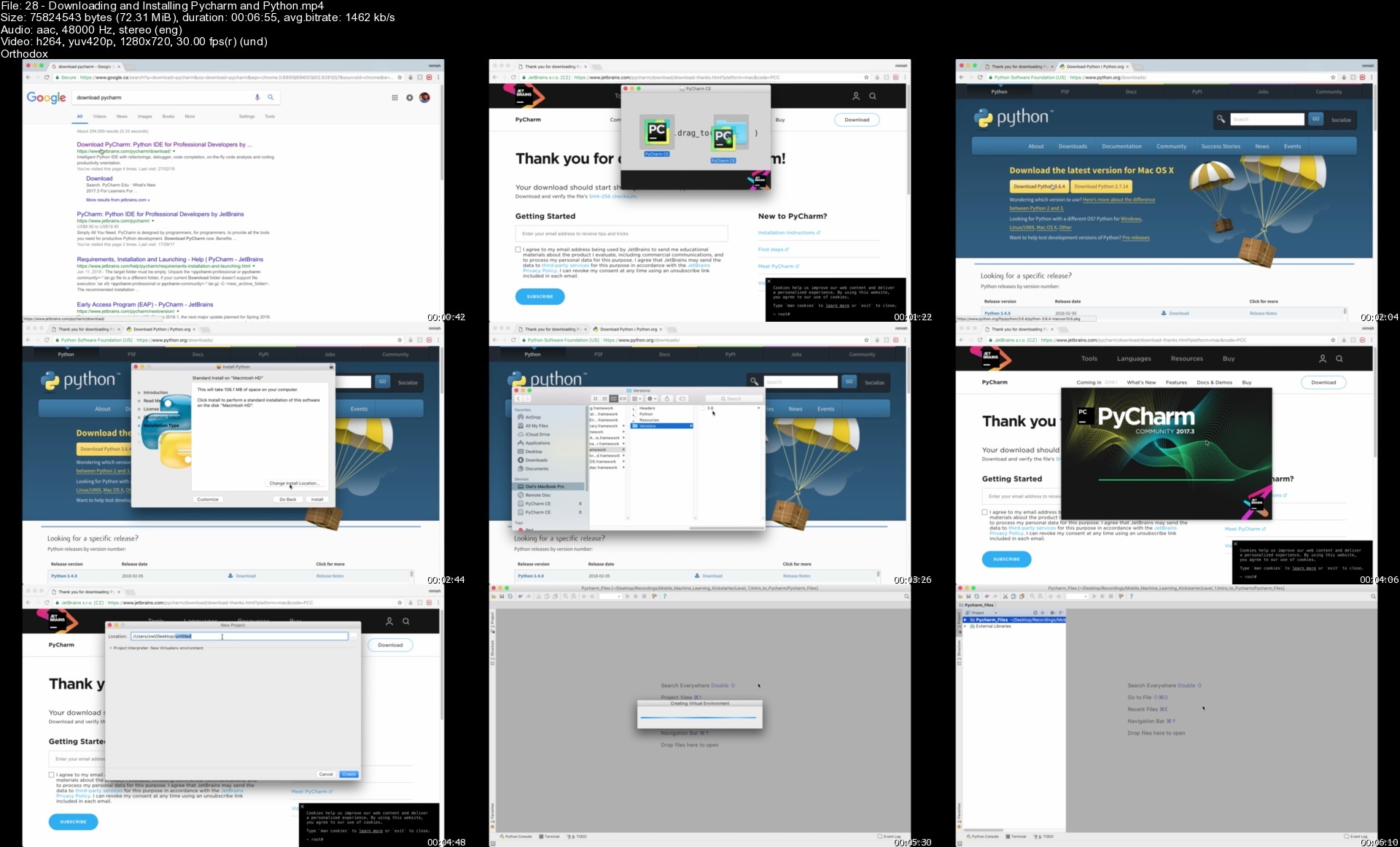

Complete Prediction And Detection Model Building With Python
Last updated 2/2019
MP4 | Video: h264, 1280x720 | Audio: AAC, 44.1 KHz
Language: English | Size: 12.36 GB | Duration: 18h 18m
Build data handling & manipulation projects with machine learning. Learn Java, Python & stock market prediction. & More!
What you'll learn
Learn how to code in Java, including all the fundamentals on superclasses, operations, and axis modifiers.
Build user interfaces for Android apps, including connecting all the features and implementing the backend
Code in Python is one of the Top 3 coding languages in demand this year.
Use Tensorflow, the #1 open source software library for dataflow programming.
Build hands-on projects and use source code to check your work and expand.
Meet the Mammoth Interactive community.
And more.
Requirements
All Levels Welcome
Description
Build 9 projects while learning to code and build machine learning models. Experience the power of cutting edge frameworks and learn to handle all types of data.With crystal-clear audio, HD screencasts, and over 120 lectures, this is a course you do not want to miss.You'll build Image Recognition apps that have powerful features. You'll learn topics that include
Stock Market PredictionRetrieving Data via RESTful API CallParsing JSON Data, Pycharm-StyleProcessing Text DataSetting up Vocab DictionaryWeather PredictionFirst: A Thorough Introduction For BeginnersLearn to download and install Android Studio and explore the interface. You'll get all source code and project files for the 9 hands-on projects in this course.You'll learn how to code in Java, including all the fundamentals on superclasses, operations, and axis modifiers. You'll learn how to build a user interface for an Android App, including connecting all the features and implementing the backend. Included in this course is material for beginners to get comfortable with the interfaces. Please note that we reuse this content in similar courses because it is introductory material. You can find some material in the course Hands-On Machine Learning: Learn TensorFlow, Python, & Java!Code In The Top Languages Of The YearYou'll learn how to code in Python, which we will show you through Pycharm. Python is one of the Top 3 coding languages in demand this year, alongside Java and Javascript. Python is used by companies big and small like YouTube, Instagram, and Google.Use The Top Software For ProgrammingYou will learn how to use Tensorflow, the #1 open source software library for dataflow programming. Tensorflow is a symbolic math library, and we will use it for machine learning applications.And MORE Data Handling And Manipulation ProjectsFormatting DatasetsBuilding Computational GraphExploring the CIFAR 10 DatasetLoading and Displaying ImagesLoading Face and Non Face ImagesEmotions Detection Project
Overview
Section 1: Introduction to Machine Learning + Software
Lecture 1 Projects Overview
Lecture 2 Prediction and Detection Project Resources - Mammoth Interactive
Section 2: Android Studio
Lecture 3 Downloading and Installing Android Studio
Lecture 4 Exploring Interface
Lecture 5 Setting up an Emulator and Running Project
Lecture 6 Code
Section 3: Introduction to the Java Programming Language
Lecture 7 Introduction to the Java Programming Language
Lecture 8 Variable Types
Lecture 9 Operations on Variables
Lecture 10 Array and Lists
Lecture 11 Array and List Operations
Lecture 12 If and Switch Statements
Lecture 13 While Loops
Lecture 14 For Loops
Lecture 15 Functions
Lecture 16 Parameters and Return Values
Lecture 17 Classes and Objects
Lecture 18 Superclass and Subclasses
Lecture 19 Static Variables and Axis Modifiers
Section 4: App Development
Lecture 20 Intro To Android App Development
Lecture 21 Building Basic UI
Lecture 22 Connecting UI to Backend
Lecture 23 Implementing Backend and Tidying UI
Section 5: Machine Learning Concepts
Lecture 24 Machine Learning Explained
Lecture 25 Pycharm Files - Mammoth Interactive
Section 6: Pycharm Projects Overview
Lecture 26 Project Overview
Lecture 27 Pycharm Source Files - Mammoth Interactive
Section 7: Introduction to PyCharm
Lecture 28 Downloading and Installing Pycharm and Python
Lecture 29 Exploring Pycharm
Section 8: Python Language Basics
Lecture 30 Introduction to Variables
Lecture 31 Variables Operations and Conversions
Lecture 32 Collection Types
Lecture 33 Collections Operations
Lecture 34 Control Flow If Statements
Lecture 35 While and For Loops
Lecture 36 Functions
Lecture 37 Classes and Objects
Section 9: Beginner's Tensorflow Project
Lecture 38 Project Demo
Lecture 39 Topics List
Lecture 40 Installing TensorFlow
Lecture 41 Importing Tensorflow to Pycharm
Lecture 42 FAQ: Help with TensorFlow Installation
Lecture 43 Constant Nodes and Sessions
Lecture 44 Variable Nodes
Lecture 45 Placeholder Nodes
Lecture 46 Operation nodes
Lecture 47 Loss, Optimizers, and Training
Lecture 48 Building a Linear Regression Model
Lecture 49 Tensorflow Project Files - Mammoth Interactive
Section 10: Build Image Recognition Apps
Lecture 50 Introduction to Upcoming Projects
Lecture 51 Source Code - Mammoth Interactive
Section 11: Stock Market Prediction
Lecture 52 Project Demo
Lecture 53 Project Overview
Lecture 54 If Receiving JSON Parsing Error
Lecture 55 Retrieving Data via RESTful API Call
Lecture 56 Parsing JSON Data Pycharm Style
Lecture 57 Formatting Data
Lecture 58 Building the Model
Lecture 59 Training and Testing The model
Lecture 60 Freezing Graph
Lecture 61 Setting up Android Project
Lecture 62 Building UI
Lecture 63 Requesting Data Via AsyncTask
Lecture 64 Parsing JSON Data Android Style
Lecture 65 Running Inference and Displaying Results
Lecture 66 Stock Market Prediction Project Files - Mammoth Interactive
Section 12: Text Prediction
Lecture 67 Project Demo
Lecture 68 Project Overview
Lecture 69 Processing Text Data
Lecture 70 Building Data Sets and Model Builder Function
Lecture 71 Building Computational Graph
Lecture 72 Writing Training and Testing Code
Lecture 73 Training, Testing, and Freezing Graph
Lecture 74 Setting up Android Project
Lecture 75 Setting Up a User Interface
Lecture 76 Setting up Vocab Dictionary
Lecture 77 Formatting Input and Running Through Model
Lecture 78 Interpreting Results and Summary
Lecture 79 Text Prediction - Mammoth Interactive
Section 13: Weather Prediction
Lecture 80 Project Demo
Lecture 81 Project Overview
Lecture 82 Retrieving the Data
Lecture 83 Formatting Datasets
Lecture 84 Building Computational Graph
Lecture 85 Writing Training, Testing, and Evaluating Functions
Lecture 86 Training, Testing, and Freezing the Model
Lecture 87 Setting up Android Project
Lecture 88 Building the User Interface
Lecture 89 Build App Backend and Project Summary
Lecture 90 Weather Prediction - Mammoth Interactive
Section 14: Build Scientific Analysis Apps
Lecture 91 Introduction to Upcoming Projects
Lecture 92 Source Code - Mammoth Interactive
Section 15: Simple CIFAR10
Lecture 93 Project Demo
Lecture 94 Project Overview
Lecture 95 Exploring CIFAR 10 Dataset
Lecture 96 CIFAR 10 Android Fix
Lecture 97 Formatting Input Data
Lecture 98 Building the Model
Lecture 99 Freezing Graph and Training Model
Lecture 100 Setting up the Android Project
Lecture 101 Setting up UI
Lecture 102 Loading and Displaying Images
Lecture 103 Formatting Image Data for Model Input
Lecture 104 Predicting and Displaying Results
Lecture 105 Project Summary
Lecture 106 CIFAR 10 Project Files - Mammoth Interactive
Section 16: Face Detection
Lecture 107 Project Demo
Lecture 108 Project Overview
Lecture 109 Loading Face and Non Face Images
Lecture 110 Reformatting Input Data
Lecture 111 Building Model and Writing Train and Test Scripts
Lecture 112 Freezing Graph and Training and Testing Model
Lecture 113 Setting up Android Project
Lecture 114 Setting up User Interface
Lecture 115 Loading and Display Images
Lecture 116 Formatting Data and Running Inference
Lecture 117 Displaying Results and Summary
Lecture 118 Facial Detection Project Files - Mammoth Interactive
Section 17: Emotions Detection
Lecture 119 Project Demo
Lecture 120 Project Overview
Lecture 121 Loading and Formatting Data
Lecture 122 Building Train and Test Data Sets
Lecture 123 Building the Model
Lecture 124 Building Train, Test, and Prediction Functions
Lecture 125 Training and Testing the Model
Lecture 126 Setting up Android Project
Lecture 127 Importing and Displaying Images
Lecture 128 Convert Images and Running Inference
Lecture 129 Displaying Results and Summary
Lecture 130 Detecting Emotions Project Files - Mammoth Interactive
Lecture 131 Bonus Lecture Community Newsletter
Take this course if you want to create Stock Market and Weather Prediction models, code, process data, and much more.
Homepage








